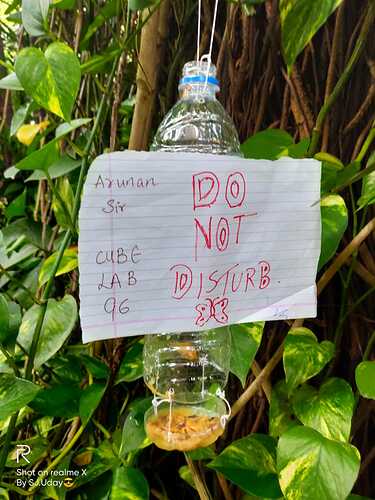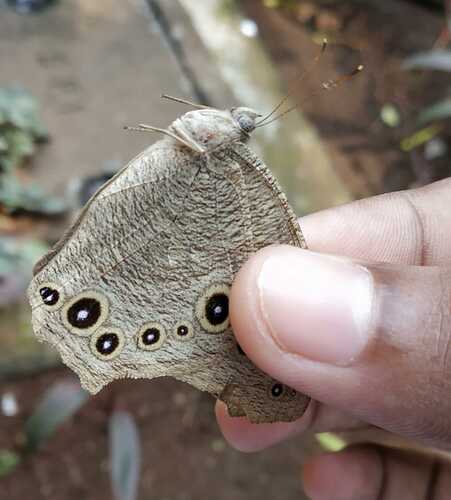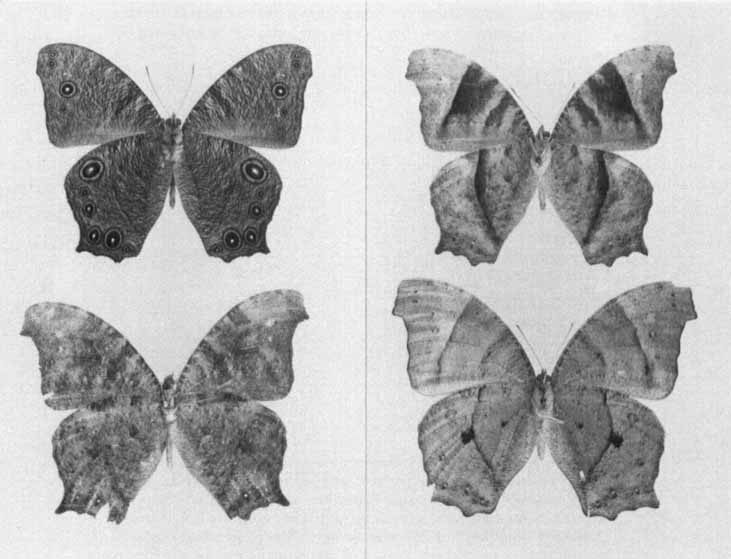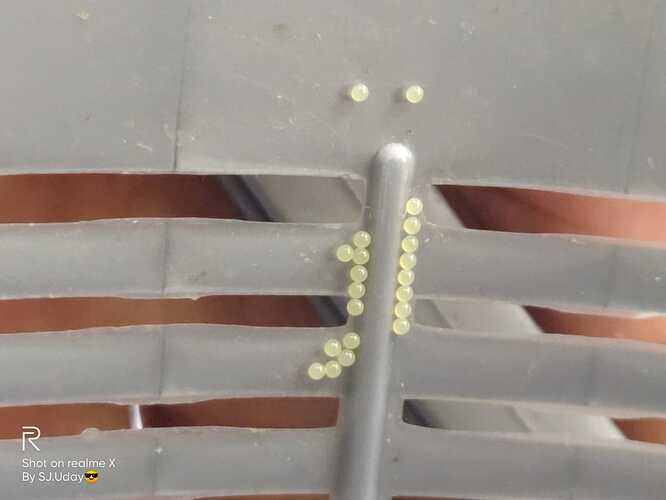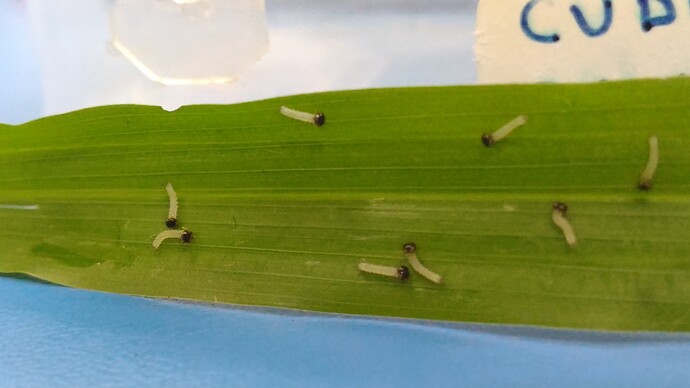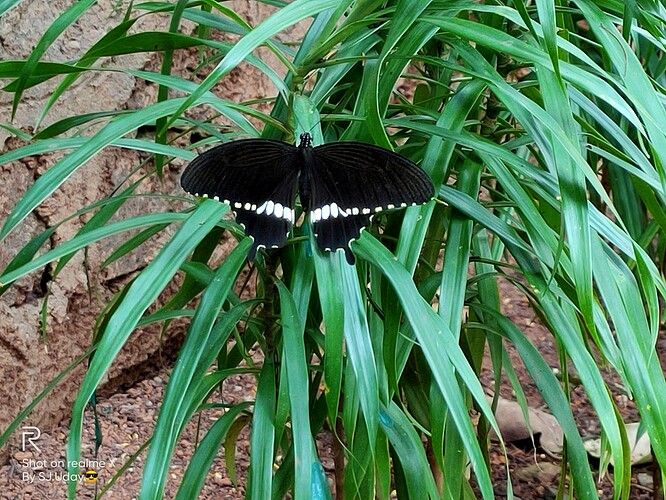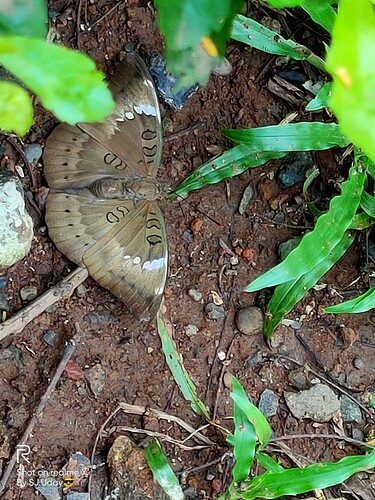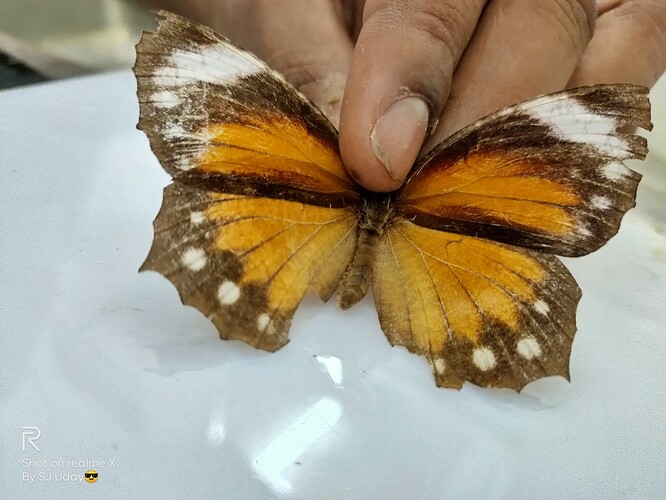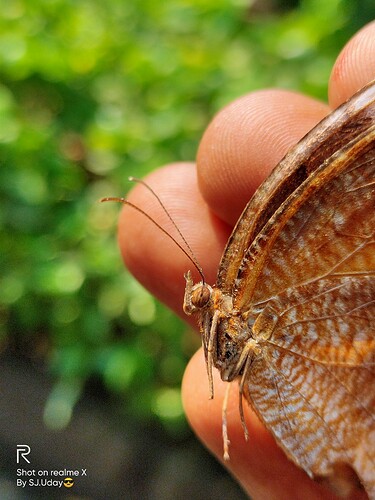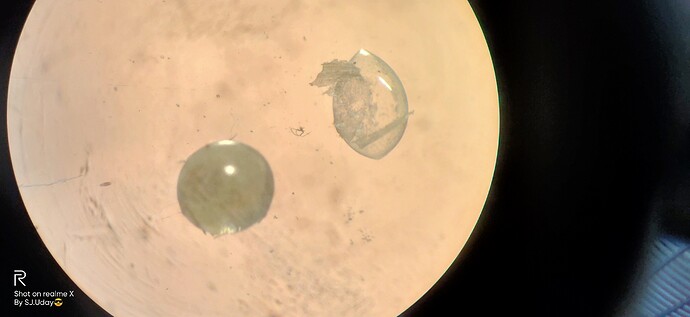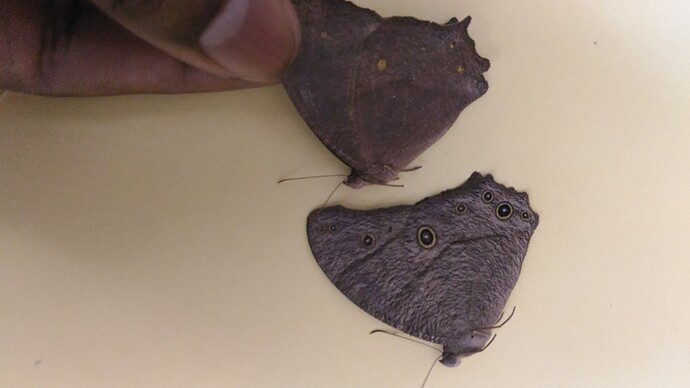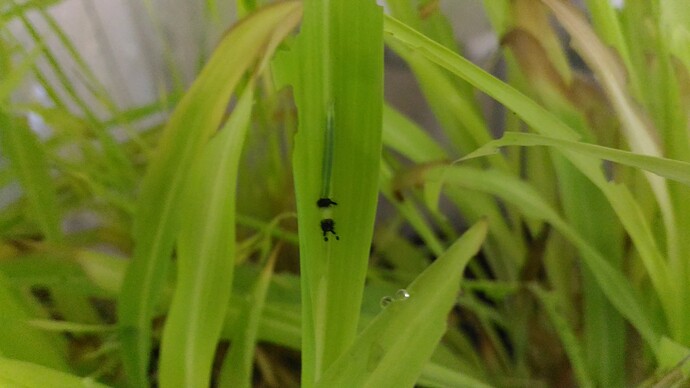CUBISTS went hunting for butterflies. They set up a bait trap. The bait trap is an apparatus which offers bait and attracts insects. We used fermented banana which could attract fruit feeding butterflies. Well yes, not all butterflies feed on nectar. Some also consume fruits. Catching butterflies through traps is easier than running behind butterflies! Of course, there are limitations as you would not get nectar-feeding species in your trap. However, we were eager to catch some butterflies and made a bait trap from a plastic bottle.
[center]
[/center]
Within a few minutes, we found a visitor, Common Evening Brown or Melanitis leda. There were other visitors too, including fruit flies, Common Palm-fly (Elymnias hypermnestra). But Melanitis leda is striking because of its wing patterns!
[center]
[/center]
What is striking about wing patterns? Well, wing patterns in Melanitis leda have been known to differ across seasons. Being a tropical species, seasons here correlate to predominantly dry and wet. The dry season (November - May) has dried leaf litter scattered around the ground floor. The wet season (June - October) has abundant green vegetation. So what has this got to do with wings?
Wings of Melanitis leda has elements called “eye-spots”. Eye-spots are circular concentric rings present near the wing margins. In the dry season, these eye-spots are reduced in size. While in the wet season they are prominent (please see dry and wet season forms of in Melanitis leda this link) What could be the significance behind the variation of eye-spot size? Melanitis leda adults feed on grasses and their life-cycle usually revolves around the ground-level vegetation. Hence there is a hypothesis that wing patterns in this species change as an adaptation to changes in background vegetation. Following is a hypothesis explaining the cause of variation.
Hypothesis: Reduced eye-spot size in the dry season would reduce the chances of detection by predators. When the butterfly with reduced spots sits against a background of dried leaf litter, it is less likely to be detected. If it has bigger spots, it will be detected faster. On the other hand, large eye-spot size during the wet season could make the butterfly conspicuous against the green vegetation background. However, the presence of eye-spots on wing margin wil cause predators to attack the wing margin. As a result, vital body parts like head, thorax and abdomen are likely to be safe.
This hypothesis was tested in an experiment which involved another butterfly species (Bicyclus anynana) also exhibiting eye-spot size variation. The predator was mantid. It was found that butterflies with larger eye-spot size were difficult to capture or attack by mantids than butterflies with smaller eye-spot size. Thus eye-spot size variation could have evolved as a selection against predators.
Eye-spot size variation demonstrates the use of butterflies as a model system to address questions in evolutionary biology/ adaptations. There could be several other possibilities. We could discuss this in the latter course. If you have any questions/ suggestions/ comments regarding this, please feel free to post!
